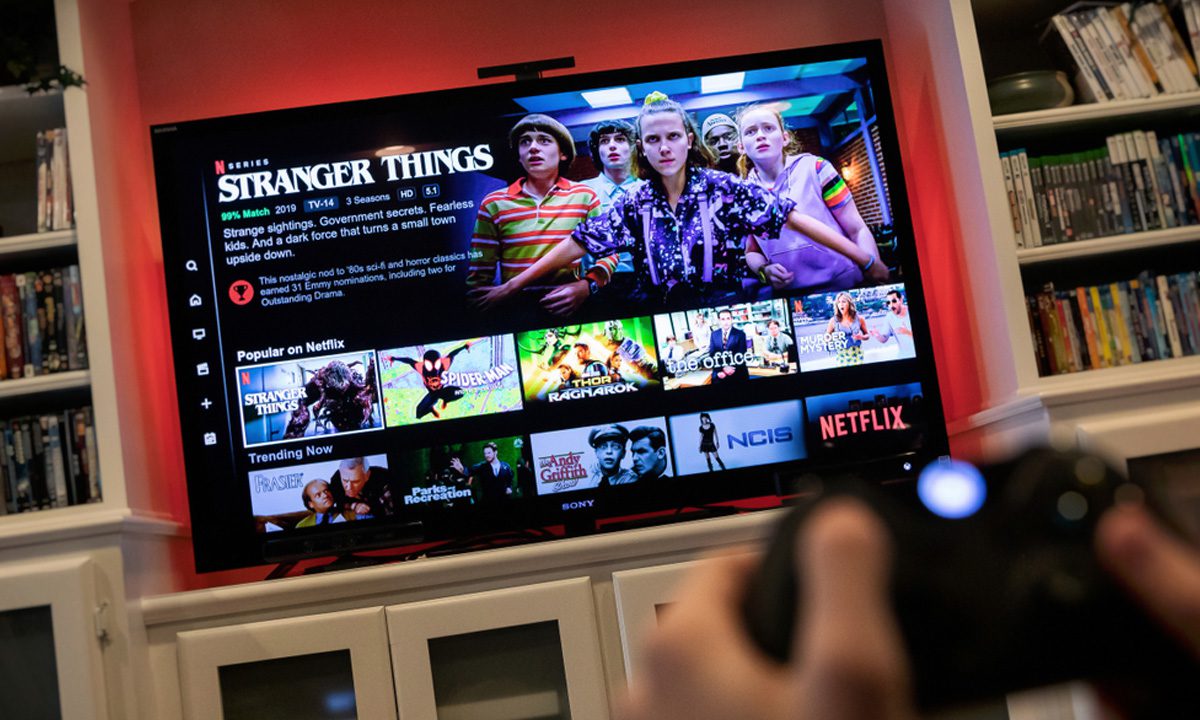
Newtonian physics applies to Netflix, too — what goes up comes down — and so it is with the streaming pioneer right now. Still, Wall Street and Main Street views differ considerably as people continue obsessing over favorite shows in nonlinear subscription TV fashion.
Losing roughly half the subscribers in the second quarter as it predicted three months ago, Netflix is reacting to the streaming correction by tweaking troublesome aspects of its model like account password sharing, launching an ad-supported tier, and upping its content budget.
These appear less the moves of a company on a downslide than of one figuring out how to go from the only game in town to one of many choices at a time of consumer belt-tightening.
FOX Business reported on Wednesday (July 20) that “shares of Netflix are on track for their worst day in over a decade after at least nine Wall Street analysts downgraded the stock following the streaming behemoth’s disappointing earnings results. As of the time of publication, the stock is down more than 36% on Wednesday.”
In its second-quarter letter to shareholders, Netflix took an upbeat view of the downbeat period, pointing to how its content is creating demand in other parts of the entertainment ecosystem and noting how the company will build on this network effect to compete in a crowded field.
“When we deliver shows and movies that members are talking about in large numbers, we can influence pop culture, build passion for Netflix and create an experience that is differentiated and difficult-to-replicate,” Netflix said, noting that ‘Stranger Things’ pushed the 1985 song ‘Running Up That Hill’ “to the top of the music charts,” adding that “Metallica also enjoyed a return to the charts in the U.S. and U.K. with their 1986 song ‘Master of Puppets’ after being featured in the new season of ‘Stranger Things.’”
Also saying that “cumulative Twitter volume for ‘Stranger Things’ continues to outpace both ‘Obi-Wan Kenobi’ and ‘Top Gun Maverick,’” Netflix said this proves its binge release strategy works and feeds “water cooler conversation” about the service and the many ways it engages.
Read: Microsoft to Help Launch Ad-Supported Netflix
Streaming’s Demise Exaggerated
New PYMNTS data supports the idea that as the pandemic continues winding down subscribers are watching less TV, but streaming entertainment is no less a part of everyday life.
According to forthcoming PYMNTS global benchmarking of the growth of the connected economy last quarter, we found a strong correlation between streaming TV and other connected activities, with 72% of consumers who use video and music streaming services also using messaging apps to communicate with their friends and family, for example.
Part of the “Have Fun” pillar of PYMNTS Connected Economy framework, we found that engagement with streaming video decreased a modest 2.3% between Q1 and Q2, and the entwined “Communicate” pillar was down even less with a 1% drop off in Q2.
These findings cast the current Netflix drama — and issues of the wider streaming world — in a different light than the more gripping stories of subscriber cancellations and ad-supported tiers.
Taken from over 15,000 consumer responses in 11 nations, the new data indicates that a current weakening in streaming is part of pandemic correction. What went way up during the worst of COVID-19 is now competing with outdoor activities, travel and facing a subscription housecleaning where millions of consumers will decide what they can and can’t go without.
See also: Netflix to Buy ‘Happy Feet’ Animation Studio Animal Logic
Like the payments sector, Netflix is also focusing more on localization in programming, with plans to substantially increase original programs for non-English-speaking markets, more animated features via its acquisition of animation studio Animal Logic, and several gaming firms to feed the platform’s growing mobile gaming offering.
See also: Netflix Tests New Password Sharing Fee Model in LatAm